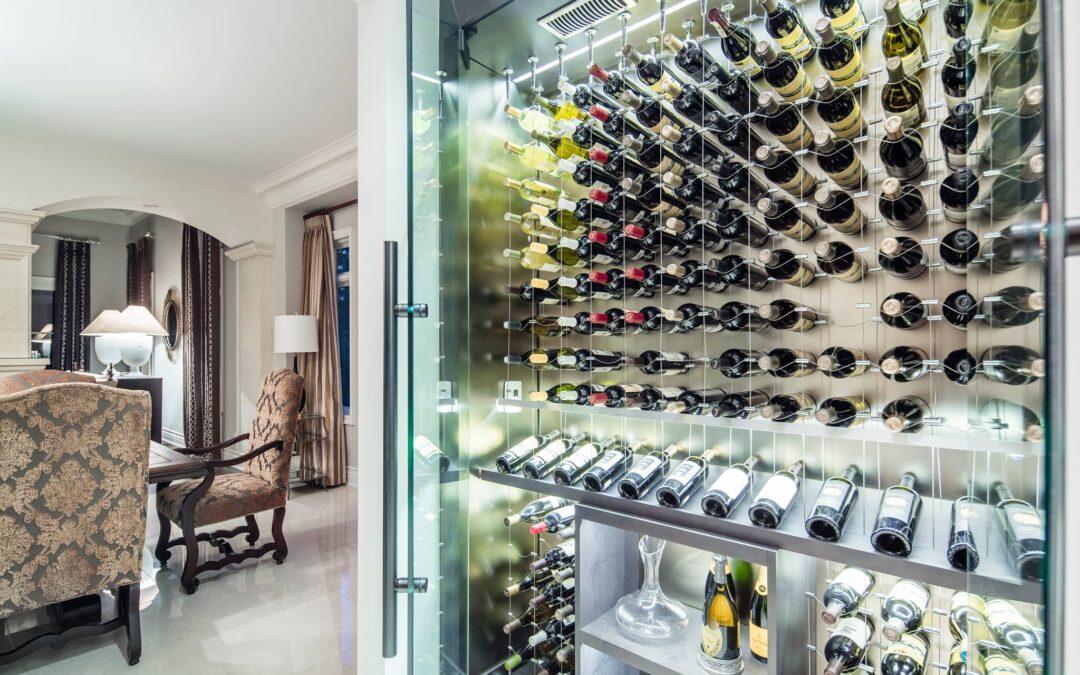Glass-enclosed wine cellars have become a modern staple in high-end design, offering a stunning showcase for collections while blending seamlessly into contemporary spaces. But not all glass is created equal—especially when it comes to preserving wine.
If you’re considering a glass wine cellar, choosing the right type of glass is crucial to ensure proper insulation, control condensation, and maintain a stable environment for your wine.
Why Glass Matters in a Wine Cellar
Glass can be both beautiful and practical—but without the proper specifications, it can compromise your wine cellar’s functionality. Poor insulation or condensation buildup can lead to temperature fluctuations and moisture issues, both of which can damage your wine over time.
To create an environment that both protects your collection and shows it off in style, selecting the correct glass is essential.
1. Insulated Glass Is a Must
Standard single-pane glass doesn’t provide the thermal resistance needed for climate-controlled spaces. Instead, insulated (dual- or triple-pane) glass is recommended. These panes trap air or gas (like argon or krypton) between layers to reduce heat transfer and maintain a steady internal temperature.
-
Dual-pane glass is the minimum standard for most climate-controlled wine cellars.
-
Triple-pane glass adds an extra layer of protection, ideal for cellars in warmer or more humid environments.
This thermal barrier helps reduce the workload on your cooling system and minimizes energy costs.
2. Low-E Glass Enhances Performance
Low-emissivity (Low-E) glass is another excellent option. It’s coated with a microscopically thin layer of metal oxide that reflects UV and infrared light while allowing visible light to pass through.
This helps:
-
Prevent heat gain from sunlight
-
Reduce fading of labels and wood finishes
-
Improve overall energy efficiency
Low-E coatings can be applied to insulated glass for maximum performance.
3. Condensation Control Is Critical
Condensation on glass panels is not only unsightly—it can be a sign of poor insulation or improper HVAC setup. To help prevent it:
-
Use well-insulated glass with proper seals
-
Consider installing a commercial-grade wine cellar cooling system specifically designed for glass enclosures
-
Maintain the right balance of temperature and humidity inside the cellar
Designers often recommend setting the wine cellar interior temperature around 55°F with relative humidity between 50–70%. Proper airflow from a well-chosen cooling system is essential to avoid foggy glass and mold issues.
4. Framing and Sealing: Don’t Overlook the Details
Even the best glass won’t perform well without the right framing and sealing. Doors and glass panels should be airtight, with quality gaskets, magnetic seals, and thermally broken frames to prevent heat transfer.
If your design includes large glass walls or floor-to-ceiling panels, custom framing may be needed to ensure stability and thermal efficiency.
Final Thoughts
Choosing the right glass for your wine cellar is about more than aesthetics. Insulated, Low-E, and properly sealed glass panels help create a controlled environment that protects your collection and showcases it beautifully.
Whether you’re designing a sleek, modern showpiece or integrating a cellar into your living space, Cool Wine Cellar can help you plan the perfect glass enclosure—built for both beauty and performance.

